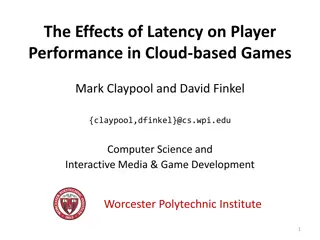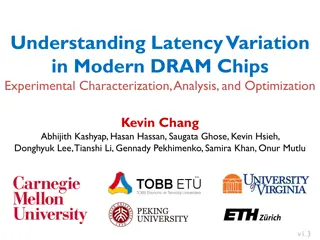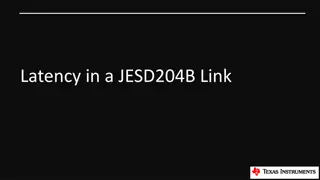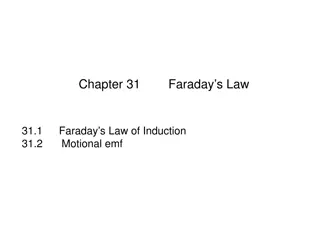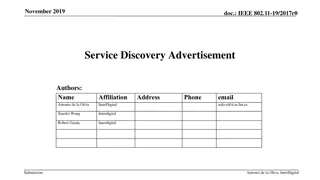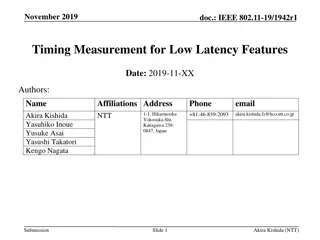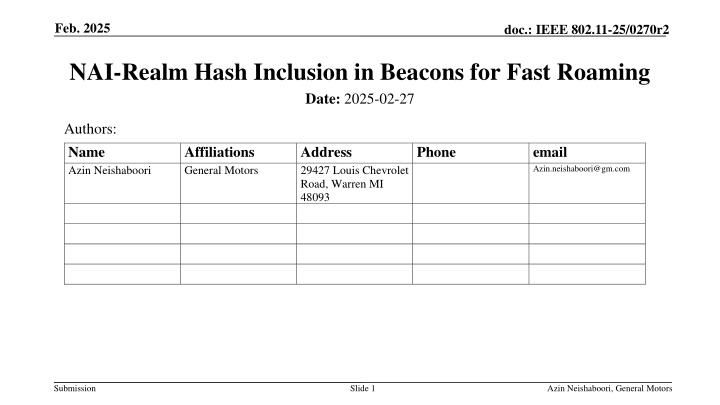
Efficient Hashing Using Bloom Filters for Fast Roaming in IEEE 802.11 Networks
Explore the implementation of Bloom filters in AP beacons for faster roaming of high-mobility client STAs, reducing handover latency by including a hash of NAI realms. Learn about the benefits, challenges, and proposed solutions in this innovative approach to improve connectivity in wireless networks.
Download Presentation

Please find below an Image/Link to download the presentation.
The content on the website is provided AS IS for your information and personal use only. It may not be sold, licensed, or shared on other websites without obtaining consent from the author. If you encounter any issues during the download, it is possible that the publisher has removed the file from their server.
You are allowed to download the files provided on this website for personal or commercial use, subject to the condition that they are used lawfully. All files are the property of their respective owners.
The content on the website is provided AS IS for your information and personal use only. It may not be sold, licensed, or shared on other websites without obtaining consent from the author.
E N D
Presentation Transcript
Feb. 2025 doc.: IEEE 802.11-25/0270r2 NAI-Realm Hash Inclusion in Beacons for Fast Roaming Date: 2025-02-27 Authors: Name Azin Neishaboori Affiliations General Motors Address 29427 Louis Chevrolet Road, Warren MI 48093 Phone email Azin.neishaboori@gm.com Submission Slide 1 Azin Neishaboori, General Motors
Feb. 2025 doc.: IEEE 802.11-25/0270r2 Abstract High mobility client STAs such as vehicles require very low AP handover latency to maintain connectivity It is too time-consuming for a moving STA to perform ANQP query-response with potential target APs to determine if it can successfully authenticate and roam to a nearby 802.11u-WFA Passpoint-capable AP For APs catering to high-mobility STAs, we propose including an optional space-efficient hash of all NAI realms supported by an AP using Bloom filter in the beacon Because of small chance of false positives remaining with Bloom filter, ANQP still needed to verify the NAI realms STA has credentials for and supported by the AP The overall gain: STA will only send an ANQP query to a nearby AP it is almost certain it can roam to successfully Submission Slide 2 Azin Neishaboori, General Motors
Feb. 2025 doc.: IEEE 802.11-25/0270r2 Recap The NAI Realm subfield is one or more NAI Realms formatted as defined in the NAI Realm Encoding Type bit of the NAI Realm Encoding subfield. If there is more than one NAI Realm in this subfield, the NAI Realms are delimited by a semicolon character (i.e., ; , which is encoded in UTF-8 as 0x3B). All of the realms included in the NAI Realm subfield support all of the EAP methods identified by the EAP Method subfields, if present. The maximum length of this subfield is 255 octets. [1] Info ID (2 octets) Length (2 octets) NAI Realm Count (2 octets) NAI Realm Tuples (variable) NAI Realm ANQP-element format [1] NAI Realm Data Field Length (2 octets) NAI Realm Encoding (1 octet) NAI Realm Length (1 octet) NAI Realm (variable) EAP Method Count (1 octet) EAP Method Tuples (variable) NAI Realm Tuple subfield format [1] Maximum size = 255 octets Submission Slide 3 Azin Neishaboori, General Motors
Feb. 2025 doc.: IEEE 802.11-25/0270r2 Efficient hashing to avoid beacon bloating: propose to use Bloom filters Use similar method as used for pre-association discovery, see 11.23.4 and 11.23.5 of [1] NAI realm to be used to create a NAI realm hash, and then input to k hash functions to determine k bits to be set in the Bloom filter bit array We need to add m bits for the Bloom filter, and use k uncorrelated hash functions (max of 16) Example: 4 sets of 4 hash functions as used in Wi-Fi Aware [2], one set used for a single Bloom filter, where the set index is indicated by the sender The Bloom filter bit array (m bits) is advertised in the beacon along with values of parameters m and k Alternatively, similar to Wi-Fi Aware, set k = 4, and include in the beacon an index s to the specific set of 4 hash function used The non-AP STA first performs hash on realms it supports, applies Bloom filter using same hash functions and determines if the identified bits are set in advertised beacon Submission Slide 4 Azin Neishaboori, General Motors
Feb. 2025 doc.: IEEE 802.11-25/0270r2 Challenges of Bloom Filter use for NAI Realms indication False positives still possible with Bloom filter (10% for m > 5N, 1% for m>15N) [2] Example: If 20 realms supported, for 10% false positive rate, m > 100 bits 15 octets needed for filter bit array A realm no longer supported by an AP cannot be easily removed from the filter It does not fully eliminate the need for ANQP exchange: When a non-AP STA receives a beacon including hash of NAI realms, (a) It first discards from the list of its configured realms most of the non-supported realms (b) It sends an ANQP query to verify with full certainty that an AP supports at least one of the (non-discarded) realms included in its beacons/probe responses, and to retrieve authentication method details What is gained is great reduction in likelihood of reaching out to an AP with no matching NAI realm (c) It proceeds with link establishment with the AP if there is at least one matching realm and hope it is not a false positive (may fail with a low probability) Submission Slide 5 Azin Neishaboori, General Motors
Feb. 2025 doc.: IEEE 802.11-25/0270r2 Proposal 1. Add a new NAI-Realms Hint IE with format similar to Service Hint IE [1] and respective extended capability bit: The Number Of Hash Functions subfield is set to a value equal to k-1, where k is the number of hash functions used by the Bloom filter as described in 11.23.5. The Bloom Filter Bit Array field provides an indication of the services offered by or through the AP or PCP with a target probability of false positive p. The length of the Bloom Filter Bit Array field in octets is where m is the size of the Bloom filter in bits. How the size of the Bloom filter is determined is out of the scope of this standard. The maximum length of the Bloom Filter Bit Array field is 128 octets. [1] Submission Slide 6 Azin Neishaboori, General Motors
Feb. 2025 doc.: IEEE 802.11-25/0270r2 Proposal Cont d 2. Tie presence of NAI-Realms Hint IE with Interworking Service IE Assert that when NAI-Realms Hint IE/capability indication is present, Interworking Service IE/capability indication is also present Optionally modify Interworking IE to add indication of NAI-Realms Hint IE also being included in beacon/probe response, e.g., by adding a new venue group to Venue Info for APs: e.g., group code 12 for outdoor vehicular See [1] Submission Slide 7 Azin Neishaboori, General Motors
Feb. 2025 doc.: IEEE 802.11-25/0270r2 Straw Poll on NAI Realm Hint IE Do you agree with adding a new optional NAI Realms Hint IE in the beacon, where the new IE includes a Bloom filter bit array whose bits are set by applying a set of known hash functions on the set of NAI realms an AP STA supports? Yes No Abstain Submission Slide 8 Azin Neishaboori, General Motors
Feb. 2025 doc.: IEEE 802.11-25/0270r2 References [1] IEEE Std 802.11 2020 [2] Wi-Fi Aware Specification v4.0 [3] WLAN for High-Mobility Users, 802.11-24/378r0 Submission Slide 9 Azin Neishaboori, General Motors







